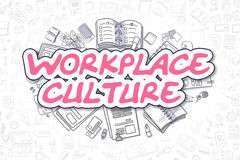
4 Steps to contesting your warning
If you don’t want to end up with a unfair dismissal. Losing your job when you shouldn’t have. It’s important to contest/ work though the process properly to keep your job. 4 Steps to contesting your warning is the process to do so. Any article that improves your knowledge on your employment rights is an important read. so please continue.
Performance and Conduct
When your performance and conduct dictate the success of your employer’s business, it is important that you are doing your best work. If you are under-performing and not meeting business expectations or standards, you may be at risk of dismissal. Prior to any decision being made to dismiss an employee, it is important a proper disciplinary process is conducted. This is in order for the business to minimize their risk of unfairly dismissing the employee. If your employer does not following the following steps, they may not have mitigated their risk of unfair dismissal. Contesting your warning has to be done with respect.

Step 1: Put the employee on informal notice
If you are not performing at the required standard, it is important that your employer has an informal chat with you about this concern. If your employer brings up their concerns about your alleged poor performance. Be sure to listen to what they are saying and provide any response. For instance, the employer’s concerns about your performance could be a result of miscommunication. Or a misunderstanding, a personal crisis or an already high work load.
If these examples apply to you, it is important that this is communicated to the employer so they are aware of your position and current circumstances. in this initial discussion. The employer should take the opportunity to identify the specific areas that you need to improve on. Also whether the employer can assist you in any way to meet these expectations.
Step 2: The formal meeting
If an informal chat has not been successful and your employer still has concerns about your work standard, they should schedule a formal meeting to address these concerns.The result of such a formal meeting could be a Performance Improvement Plan (PIP). If this is appropriate. The purpose of a PIP is to ensure that you have a clear understanding your employer’s concerns, what the employer expects of you and how you are to meet these expectations.
The PIP should detail any support mechanisms that will be available to you in this process as well as a schedule as to when you would meet to discuss your progress with the PIP. If a PIP is issued, the employer should also have regular meetings with you to ensure you are on track to completing the PIP. If your employer is not satisfied that you are progressing well through the PIP, the employer may then progress to issuing you with a warning.

Step 3: Warnings for poor performance
If your performance still hasn’t improved despite the PIP. The employer may then progress with disciplinary action such as issuing you with a warning. If an employee is issued with a warning, this should be done through a formal meeting in which at least 24 hour notice is provided. Your employer should also offer you an opportunity to bring a support person, if you wish. During this meeting, the employer has the opportunity to issue a few types of warnings:
Types of warnings
- Verbal Warning: Your employer can issue you with a verbal warning and put you on notice about the unsatisfactory work performance. This is the least severe form of punishment and should be considered as the first point of disciplinary action.
- Written Warning: Depending on the level of under performance, your employer may decide to issue you with a formal written warning. This type of warning, as the name suggests, is a written letter which notifies the employee that their performance is not up to standard. This type of warning should again put the employee on notice that if their work performance does not improve, they could face further disciplinary action, including termination. Given this is a more severe form of punishment, it is important that your employer has followed the first two steps (i.e. informal chat, PIP etc.) to ensure they have given you ample opportunity to improve your performance before this disciplinary action is taken.
- A final written warning may be issued to you at any time when an employee’s performance is unsatisfactory. You have received an earlier written warning for a related issue but your performance has not improved to the satisfaction of your employer. A final written warning could also be issued depending on the nature of the employee’s performance justifies the issue of a final written warning. If the poor performance is serious and well below any acceptable standard, this type of warning could be a issue.

We are all people
Everybody is a human being, everybody has feelings and potential. Its how this is reflected in the workplace is the challenge. How can warnings be utilized to improve employees, not just act as a disaplinary tool. Most employees want feedback, how to improve, to be better. I don’t always agree warning is the best approach. Employees stop thinking how to do the job and instead worry about how do they keep the job. It’s negative energy at the very least.
Warning and determining a dismissal is harsh, unjust and unreasonable (contesting your warning)
In determining whether a dismissal is harsh, unjust and unreasonable under the FW Act, s.387(e). This looks at whether any warnings about poor performance have been issued prior to dismissal. A warning for the purposes of s.387(e) must clearly identify:
- the areas of deficiency in the employee’s performance;
- the assistance or training that might be provided;
- the standards required; and
- a reasonable timeframe within which the employee is required to meet
such standards. - The warning must also “make it clear that the employee’s employment is at risk unless the performance issue identified is addressed.”
Not agreeing to the warning (contesting your warning)
If you have been issued with any of these warnings and you do not agree with them, it is important to note that there are ways of challenging the warning This is particularly relevant if it is a written warning. If you have been issued with a written warning which you would like to contest. It is important that you challenge or defend the warning in writing also. After you have been issued with the written warning, it is important you send an email or letter to the employer express your differing view. If its in writing then you have a record, if you end up dismissed. You can thank your employer for the warning but express that you do not agree and provide reasons for this.
If you have a justifiable response to your warning which explains and defends the employer’s concerns, it is important this is added to this letter or email. You can also request that the employer make a file note that you have contested the warning and do not agree with it. This will ensure that if you are dismissed for similar issues down the track, your employer has a written record of your opposing view. It is also important that you keep a record of your warnings and contested warnings in case of dismissal.
Step 4: Termination
If your employment continued to not improve and your employer is not confident that your performance will not improve. They may decide to terminate your employment. However, depending on how steps 1-3 were conducted, the employee may be able to lodge an unfair dismissal claim. In part because of the contesting of your warning. If you have contested your warnings and thus you feel as though the dismissal is not justified, you can lodge an unfair dismissal claim in the Fair Work Commission.

4 Steps to contesting your warning
Thank you for reading “4 Steps to contesting your warning’. Its important you know your rights. That your given a fair go. We are A Whole New Approach P/L, leading workplace representatives and advisors. We are not lawyers. AWNa is proud of its staff and the outcomes that are achived for our clients. All Fair work Australia, Fair work Commission, abandonment of employment, sacked or about to be, give us a call. We are here for you.
Advice is free, prompt and to the point. 1800 333 666
Procedural fairness in an workplace investigation






